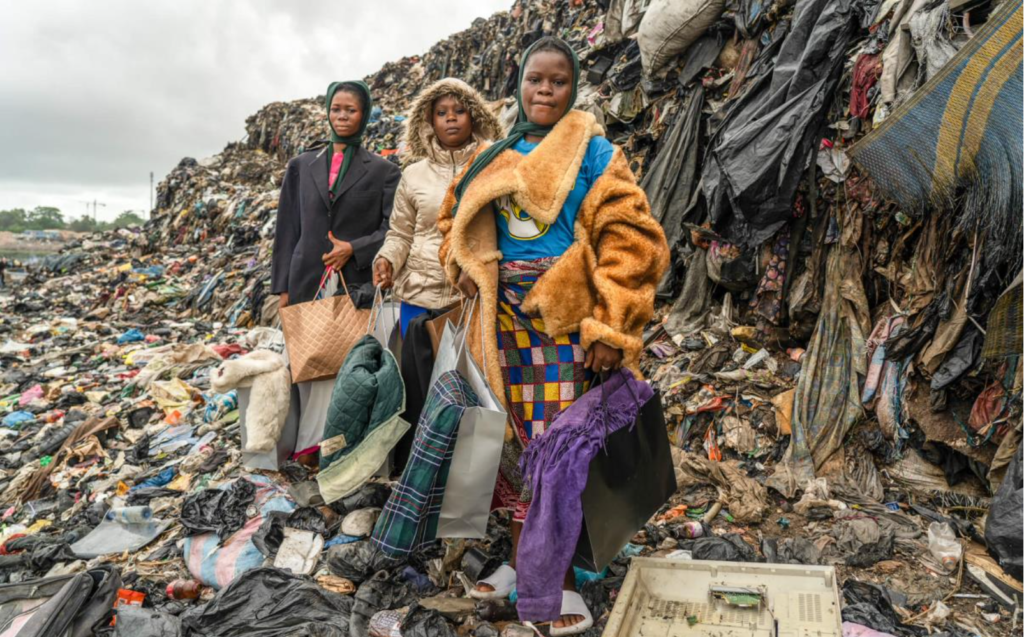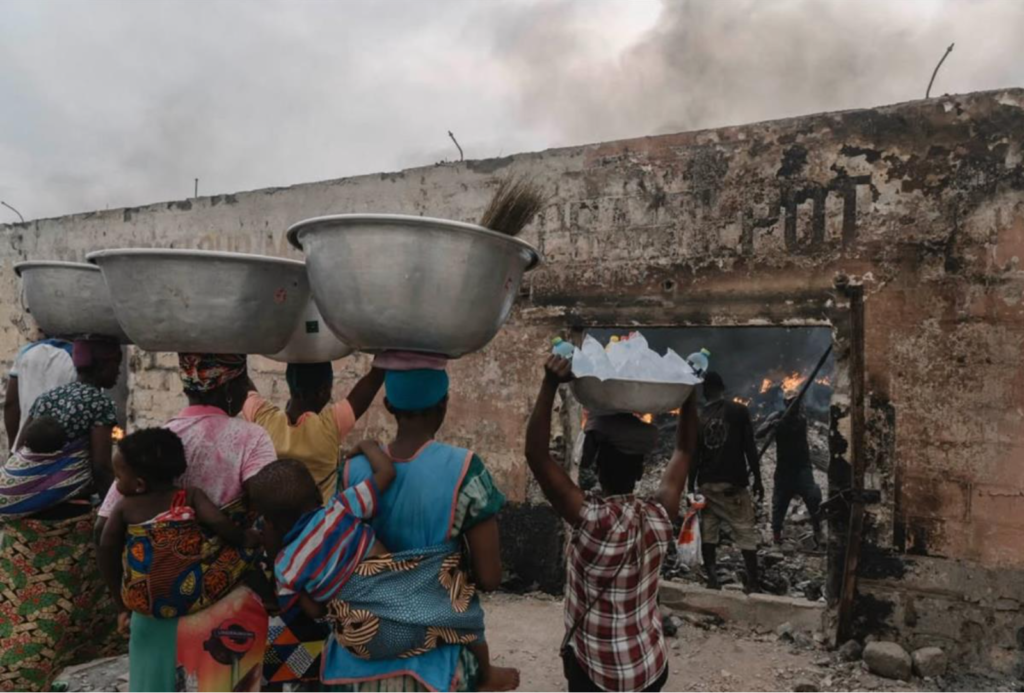It’s no secret that the fashion industry has a serious problem with textile waste and overconsumption. In the age of social media, we are consistently bombarded with fashion hauls worth hundreds of pounds and feel urged to keep up with ever-changing trend cycles.
But where do the clothes we no longer desire end up when we toss them aside to make way for the next mass of clothing?
When you donate your unwanted garments, they are likely to be sold to exporters and importers, who then sell them to vendors like those at Kantamanto Market in Accra, Ghana. Kantamanto Market is the largest second-hand clothing market, where over 30,000 Ghanaians work tirelessly to repair, reupholster and recycle clothing brought to them from Western countries like the UK and North America. This process began in the mid-20th century, Accra began to import second-hand clothing from Western countries because the cost of purchasing new clothing in Ghana was high, so Kantamanto Market became essential for Ghanaians.
Kantamanto Market is the largest second-hand clothing market in the world. It is recognised globally by sustainable fashion advocates as a key destination for the fashion industry’s unusable, low-quality waste. The Or Foundation, a non-profit organisation established to raise awareness of the issue of overconsumption in fashion, estimates that over 15 million discarded clothing items arrive at the market each week. Due to the rapid rise of fast fashion over the past decade, Kantamanto has become inundated with cheaply made garments unsuitable for sale. Consequently, it has become increasingly challenging for workers at Kantamanto to earn a livelihood.

The Climate Tribe
The market has also faced multiple challenges due to unrestrained growth across Kantamanto as a result of ad-hoc construction. In the past, it has been prone to fires. The market is also unprepared for heavy rainfall, and flooding occurs annually.
In the early hours of 2nd January, a destructive fire spread across Kantamanto Market, decimating the area, leaving stall owners and workers devastated as over 8,000 traders were severely affected by the fire and an estimate of 10 of the 13 marketing sections havefaced calamitous damage.
Sustainable fashion activists took to social media to highlight the destruction at Kantamanto. The Revival, a foundation committed to upcycling waste arriving at the market, shared distressing images of civilians witnessing the fire, illustrating the terrifying circumstances the blaze has left the Kantamanto community in, without work, without income, and facing an uncertain future.

Natalija Gormalova (kino_zen via Instagram)
Foundations like The Or Foundation and The Revival have continued to share updates on the rehabilitation of the market. The Or Foundation took to Instagram on 2 February to share an update on the state of the market and what their plans are to help the citizens of Accra recover from this devastating loss. In efforts to rebuild the market, The Or Foundation have met with market leadership groups daily to begin putting plans in place that will ensure the market will be rebuilt safely. Thanks to donations, The Or Foundation were able to provide over $170,000 to aid the clear-out of debris and purchase of new materials to rebuild the market.
Tragedies comparable to the devastating events that occurred at Kantamanto Market must never happen again; the destruction of lives and livelihoods due to clothing overconsumption should remain firmly in the past.
When shopping in the future, please remain mindful. Do you really need this? Will it remain as a wardrobe staple? Is the brand worth supporting, or do their ethics support overconsumption and the harmful methods the fashion industry has adapted to?
Do your part to prevent further tragedies at the hands of fashion.
Leave a Reply